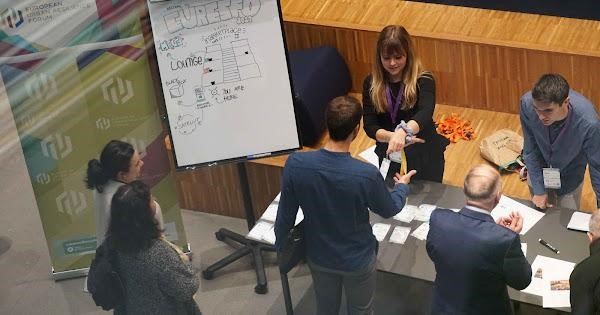
How can we widen the impact that Nature-based Solutions (NBS) can have for cities? NBS have emerged as a promising and multi-functional type of intervention to tackle societal, economic and environmental challenges such as climate change and biodiversity loss. However, clear and sufficient evidence on their impact and outcomes is still needed to better assess NBS performance, devise mechanisms to replicate and upscale innovative solutions and inform policy decisions.
What approaches can guide the way and how do we best monitor the effects of NBS implementation? The session ‘Boosting the Impact of Nature-Based Solutions for Resilient Cities and Ecosystems’ at the European Urban Resilience Forum 2021 in Malmö, Sweden, showcased examples from the CLEVER Cities and Connecting Nature projects that speak to these questions.
Speakers had several important contributions to the dialogue. Gillian Dick, Spatial Planning Manager at the Glasgow City Council (UK), for example, explained the place-based approach to NBS used in Glasgow, highlighting that, “when trying to embed NBS in policies, data is key”. Thanks to its Open Space Strategy, Glasgow is able to measure and quantify the quality and accessibility of the various spaces in the city, so that the latter can be used to their full potential. Due to the difficulty in finding social links to space, it is crucial to get locals involved. Data is used not just to plan and deliver, but also to inform how spaces should be used.

Nicola Murphy-Evans, CLEVER Cities Coordinator, Greater London Authority (UK), explained how CLEVER Cities London established a group of community researchers in Thamesmead to help the municipality understand what are the true issues that local people want to address and then layer in a nature-based solution approach. The group undertook a series of urban analysis tasks, including surface flood mapping, accessibility audit, nature audit and social observations (photographs and notes, tools to understand what the social connections are). The results are helping to build trust in co-creation processes, knit old and new communities together, and bring residents’ needs to the forefront of urban and landscape planning.
Nermina Suljevic and Lejla Bešlagić, from the City of Sarajevo (Bosnia and Herzegovina), alongside Belma Pasic, Programme Manager at the Sarajevo Economic Region Development Agency, presented the Sarajevo Process which utilises eco-therapy and immersion in nature exercises to bring residents closer to nature and link emotion to place thus transforming individual memory into collective memory. The process, developed within the Connecting Nature project, will help guide the design and impact monitoring of a sensory park and green school garden in the city.
Luis Tejero, Coordinator of Climate Change Programs, Madrid City Council (Spain), shared the Madrid Council’s work in the Pradolongo area to implement a green corridor connecting parks and green areas as part of the CLEVER Cities project. The city developed an indicator system that helps to evaluate benefits conferred to health, sustainable mobility, gender inclusion and climate comfort in a holistic approach. Pradolongo is set to become a testbed area that will help replicate such actions in the rest of the city.
Aleksandra Kazmierczak, Expert in Climate Change and Human Health, European Environment Agency, ended the speakers’ contributions by highlighting the strong role that NBS play in the EU Adaptation Strategy. She stressed the need for agreed standards, quantitative targets, measurable indicators and evaluation tools for NBS and presented the European Climate and Health Observatory, which provides access to information related to climate and human health in Europe, as a tool to support NBS impact evaluation efforts.
The audience was poised with excellent questions which led to a discussion on indicators and data and the nuances that are sometimes a part of creating and weighing indicators on a project to project basis. Finally, an audience member asked how trade-offs in NBS should be dealt with, for example, increasing blue infrastructure can sometimes lead to more mosquitos. To this, speakers Gillian Dick and Nicola Murphy-Evans concluded that dealing with these trade-offs is a balancing act. Designing NBS that bring benefits on multiple fronts, such as sustainable drainage systems that can also be used as play areas, can ensure that positive impacts prevail and increase public acceptance of NBS.

To learn more……
Access the European Commission's handbook "Evaluating the impact of nature-based solutions"
